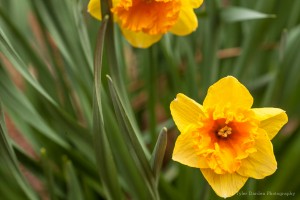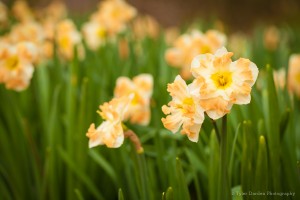Why Do Collections Matter?
by Grace Chapman, Director of Horticulture, Lewis Ginter Botanical Garden

Daffodils are just one of the many collections here at Lewis Ginter Botanical Garden. Photo by Tyler Darden
Did you know that botanical gardens are actually museums? The big difference is that instead of having collections of artwork or historical objects, we have living collections. All of our plants are documented, numbered, and tracked, just like other museum collections.
The Garden combines various types of plants into landscaped gardens to support its mission of educating the public and connecting them to the natural world. These gardens are designed for beauty, function, structure, or theme. The Garden serves as a place for visitors to view, enjoy and learn about the plants in a garden setting. The specimens in the Garden’s collections are some combination of new, unusual, interesting, native, exotic, or rare plants in beautiful, creative, and sustainably managed settings.
Plants are added or removed based on our Living Collections Policy. The purpose of this policy is to provide guidelines for Lewis Ginter Botanical Garden as it expands and evaluates its collections. Having a policy about the plants in our garden sets us apart from a display garden. This policy provides a protocol for plant acquisitions, deaccessioning, collecting, propagating, and disseminating plant material.
When adding plants to our collection, the plant has to fit into a category of one or more of our five core collections.
• Historic Collections include plants that were here during Grace Arents’ time.
• Stewardship Collections include plants that are well-adapted to our area, both native and non-native.
• Display Collections support our educational mission by helping us inspire visitors and interpret our natural world.
• Economic Botany Collections include plants that provide crucial nourishment, healing, or practical benefits to mankind.
• Natural Area Collections are the uncultivated grounds of the Garden that are subject to spontaneous generation of native, as well as exotic plants. These areas are maintained by natural regeneration of the present vegetation and are only controlled for invasive species.
This year, we are excited to add to our collection of living specimens, with the help of a few NEW donor-funded gardens. The Joan Van Arnam Memorial Azalea Walk will display evergreen and deciduous specimens of rhododendrons and azaleas in a rainbow of colors. The George Bragdon Daffodil Garden will show a spectacular display of spring blooming daffodils, but also provide all-season interest and sensory plants in universally accessible raised beds. The Linda Simon Hosta Collection will enhance our woodland display with new hosta varieties in all shapes and sizes. As a plant-geek, I’m thrilled to be able to try out new, cool plants. As a public garden professional, I’m excited to be adding plants to our collection that will delight and inspire our visitors and contribute to our mission by following the road map of our Living Collections Policy.
